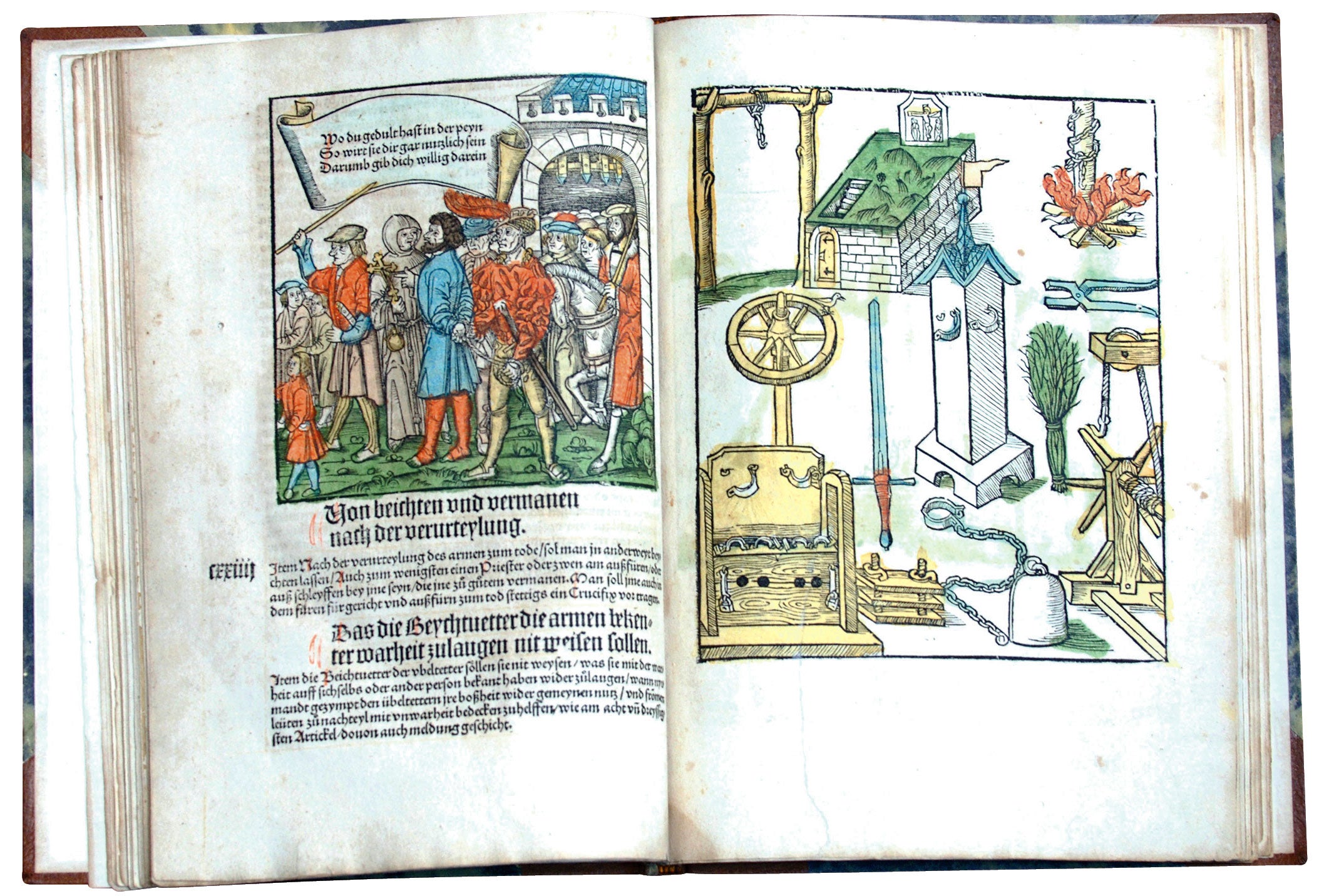BEFORE NUREMBERG…
Included in a recent HLS library exhibit, these illustrations from a 16th-century book show instruments of torture and a criminal on the way to execution during the late 1400s. This was the period when the first international criminal tribunal tried and convicted an individual for
Photo Credit: Gustav Freedman
As the marshal shouted “Let justice be done,” Peter von Hagenbach was beheaded in 1474, after being tried and convicted by the first international criminal tribunal. Created by the Archduke of Austria, the tribunal consisted of 28 judges from different states in the Holy Roman Empire. Von Hagenbach, appointed governor by Charles the Bold, Duke of Burgundy, was told to keep order in Austria’s territories on the upper Rhine. In fulfilling the duke’s directive, von Hagenbach terrorized the population.
Charged with violation of “the laws of God and man,” specifically murder, rape and perjury, among other crimes, von Hagenbach used as his defense that he was simply following orders. “Is it not known that soldiers owe absolute obedience to their superiors?” he asked.
By setting up a court to handle von Hagenbach’s case, rather than holding a summary execution, the Archduke of Austria laid the groundwork for the Nuremberg Trials, the international criminal tribunals for the former Yugoslavia and Rwanda, and the International Criminal Court, says Professor Martha Minow, who co-chaired an HLS conference on the legacies of Nuremberg (see story) and worked with students on related events, including an accompanying exhibit.
“Von Hagenbach’s defense, ‘just following orders,’ was raised by several defendants at the the Nuremberg Trials, and more recently by the International Criminal Tribunal for the former Yugoslavia, but it’s a defense that has essentially been rejected in international law,” said Minow.
